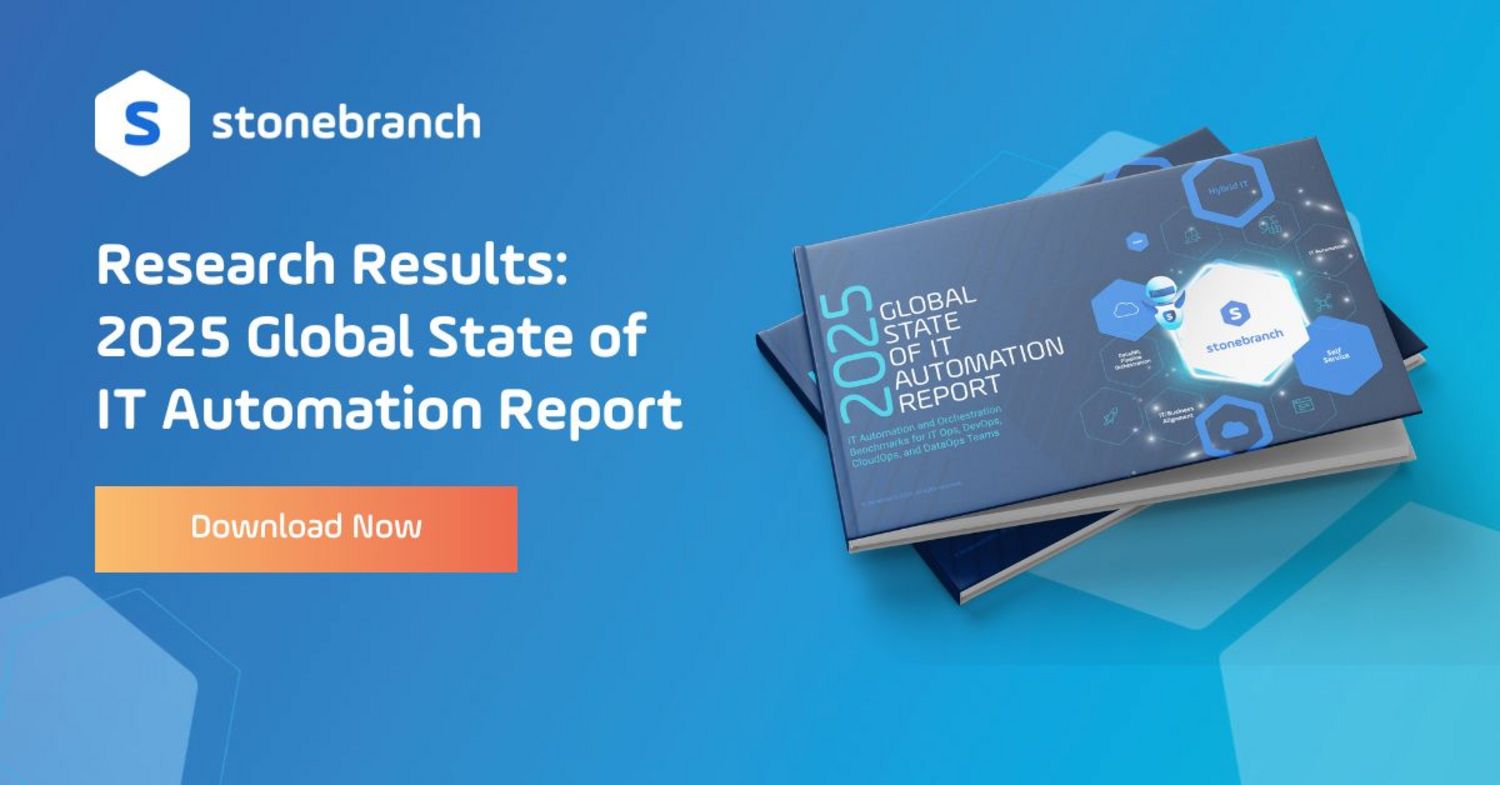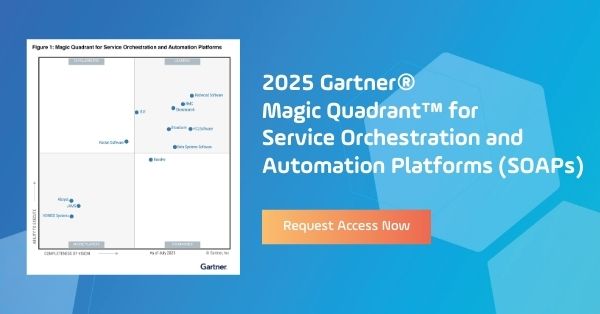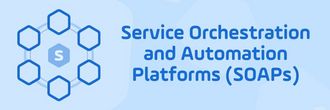Airflow Event-Based Triggers with Stonebranch
How to enable Apache Airflow for real-time data pipelines with event-based automation.

Apache Airflow is a widely used workflow management solution for building and orchestrating data pipelines. At its core, it enables data engineering teams to automate and visualize task sequences using Directed Acyclic Graphs (DAGs).
While Airflow excels at time-based orchestration, modern enterprise data environments increasingly demand real-time responsiveness. Enter event-based automation.
Event-Based Triggers with Airflow
Airflow has been capable of time-based, or batch, workflows since its inception. However, delivering real-time insights means triggering workflows the moment something happens, which is where event-driven data pipelines come into play.
As of Airflow 2+, several native methods enable event-driven DAG execution:
- TriggerDagRunOperator: Start a DAG from another DAG within the same Airflow environment. Ideal for internal workflows that depend on each other.
- Sensors: Monitor external systems and start a DAG when a specific condition is met. Best when you have a general idea of when the event will occur.
- Deferrable Operators: Pause a task until a specific event occurs. Best for unpredictable timing without the cost of constant polling.
- Airflow API: Receive webhooks or API calls from external systems to start DAGs in real time. Ideal for highly dynamic, external-event triggers.
- Datasets: Trigger a DAG when internal datasets are updated. Ideal for workflows that rely on upstream changes already tracked within Airflow.
- Asset-Driven Scheduling (Airflow 3.0+): Trigger a DAG when files or tables are updated. Ideal for asset-based workflows that don’t require polling or manual schedules.
A few examples of what you might automate using sensors, deferrable operators, or Airflow’s API include:
- Trigger a DAG when a user completes a web form
- Trigger a DAG when a data file arrives in Azure Blob Storage
- Trigger a DAG when a Kafka or AWS SQS event is received
Comparison Table: Event-Based Triggering Options in Airflow
| Method | Best For | Works With External Systems? | Airflow Version Required | Limitations |
|---|---|---|---|---|
| TriggerDagRunOperator | Triggers from within Airflow DAGs | No | 2.0+ | Limited to internal DAG-to-DAG communication |
| Sensors | Expected events at roughly known times | Yes | Any | Constant polling can be costly |
| Deferrable Operators | Unpredictable event timing | Yes | 2.2+ | Still relies on internal Airflow handling |
| Airflow API | Real-time external triggers via webhooks or API calls | Yes | 2.0+ | Requires secure configuration and integration setup |
| Datasets | Triggering based on updated internal data | No | 2.4+ | Doesn’t monitor external data sources |
| Asset-Driven Scheduling | Triggering from file or table changes | No | 3.0+ | Requires Airflow 3.0+ and internal logic setup |
The Challenges and Limitations of Event-Based Triggers in Airflow
Triggering a DAG based on a system event from a third-party tool remains complex. While Apache Airflow offers several native options for event-based orchestration, most methods still require a separate third-party scheduler to send the trigger.
For example, if you’re a developer who wants to trigger a DAG when a file is dropped into an AWS S3 bucket, you may opt to use AWS Lambda to schedule the trigger. In a one-off scenario, this approach will work. But scaling this integration across a diverse, enterprise-grade environment introduces significant operational and governance challenges. The result is a mix of operational inefficiencies, higher maintenance costs, and governance gaps.
And that’s not the only challenge. Airflow’s event-based triggers come with other limitations as well
- Fragmented Scheduling Across Platforms: Let’s say your pipeline runs across AWS, Azure, Informatica, Snowflake, Databricks, and PowerBI. Each of these tools in your pipeline would need to use that tool’s associated job scheduler. As you can imagine, managing a bunch of schedulers in addition to the Airflow scheduler can really get complex.
- Limited Cross-Platform Orchestration: Airflow is built primarily for data pipeline workflows. Orchestrating tasks across hybrid IT infrastructure and business systems requires additional tools or custom code. If you need to trigger a workflow when a file lands in an SFTP directory or when an SAP batch process completes, native Airflow alone may not be enough.
- Custom Development Requirements: If a sensor or deferrable operator for your application doesn’t yet exist, you'll have to write one from scratch — adding time, cost, and maintenance overhead.
- Polling Overhead and Cost: While deferrable operators reduce some load, many sensors still rely on polling external systems. This can mean repeatedly hitting cloud storage APIs like AWS S3 or Azure Blob Storage, which not only drives up costs over time but also consumes unnecessary compute resources.
- Lack of Centralized Observability: Troubleshooting trigger failures often means hunting through multiple logs across external systems. If an upstream file transfer fails in a third-party MFT tool, you might not know until hours later. And finding the root cause? That could require contacting multiple system owners.
- Security and Governance Gaps: Airflow’s minimal RBAC and limited governance controls often require extra effort to meet enterprise compliance standards. That means you may be stuck giving other automators either too much access or no access at all.
Two Ways to Overcome Airflow’s Limitations
These constraints explain why many enterprise data teams choose to either:
- Extend Airflow's capabilities with a meta-orchestration platform like Stonebranch UAC to level up the features and overall management of their data pipelines. UAC has a pre-made integration with Airflow that uses the Airflow API to trigger DAGs based on system events. Because UAC is an enterprise-grade solution, there is a library of integrations for data and cloud-focused applications. Essentially, any application you connect to the UAC can be used to trigger a DAG based on a system event.
- Replace Airflow entirely with the enterprise-grade features offered by a solution like Stonebranch UAC. Depending on the organization, key drivers could be observability, security and governance, self-service and UX improvements, 24/7 support, or the need to operationalize the management of data pipelines by their IT Ops team. UAC helps you do it all.
Net, you can either integrate Airflow with the UAC, or you may completely replace it. Let's take a look at both options.
Stonebranch + Airflow: Seamless Event-Based Orchestration
Stonebranch UAC is a modern orchestration solution that integrates directly with Apache Airflow to extend its native capabilities and streamline enterprise workflows. With roots in the workload automation world, UAC is what Gartner refers to as a DataOps tool. More specifically, UAC is used for DataOps orchestration. Because UAC is vendor agnostic, it’s designed to work across all the different tools used along the data pipeline. Thus, you are able to avoid vendor lock-in and orchestrate your entire data pipeline from a single platform.
Event-Based Automation
UAC extends Airflow's capabilities to help you initiate, monitor, and coordinate workflows the instant a triggering event happens.
- Trigger Airflow DAGs from real-time external events, eliminating the need for multiple custom sensors or external schedulers.
- Monitor DAG run and task instance statuses from within UAC, enabling centralized observability across all workflows.
- Consolidate scheduling across your hybrid IT ecosystem, reducing fragmentation and simplifying orchestration between Airflow and other platforms.
Always-On Monitoring
A key strength of UAC is Always-On Monitoring powered by Universal Monitors and Universal Triggers. These tools:
- Enable webhooks and real-time automation without the need for constant polling.
- Reduce compute costs by initiating workflows only when events actually occur.
- Improve reliability with full observability into every event flow.
Because these monitors can watch virtually any connected system — cloud services, on-prem applications, or third-party SaaS platforms — UAC allows Airflow users to extend event-driven orchestration far beyond what native methods can achieve. UAC can turn any integration point into a trigger for Airflow DAGs, eliminating the need for custom sensors or multiple schedulers.
As an enterprise-grade solution, UAC also offers a large library of pre-built integrations for common data and cloud applications, making it faster to connect new systems. Ultimately, this combination helps teams address Airflow’s limitations in large, complex environments while adding reliability, security, and scalability.
UAC as an Airflow Alternative
Some enterprises fully replace Airflow with UAC to gain enterprise-grade orchestration and governance across their entire automation landscape. In these scenarios, UAC not only provides the Event-Based Automation and Always-On Monitoring above, but also adds:
Multiple Ways to Create Workflows
Stonebranch UAC offers flexibility for every user, from business analysts to developers. You can design tasks and workflows using a low- or no-code, drag-and-drop visual workflow builder for quick setup and easy collaboration.
For those who prefer coding, UAC supports jobs-as-code, allowing workflows to be written in Python (similar to Airflow) or directly in your preferred IDE, such as Visual Studio Code. Developers can integrate with Git or any version control repository to apply DevOps or DataOps lifecycle practices — enabling versioning, testing, and automated deployment of workflow definitions.
Collaboration and Lifecycle Management
UAC is built for collaboration across data teams, IT Ops, DevOps, and business user teams. Its embedded DataOps lifecycle management capabilities enable teams to follow a bundle-and-promote process — packaging workflows with all dependencies and moving them between development, test, and production environments. Before promotion, the workflow simulator helps validate logic, test event triggers, and identify potential issues.
Observability, Reporting, and Forecasting
UAC gives teams clear visibility into upcoming automation activity. Forecasts can be viewed in two ways:
- A detailed list of future tasks and workflows scheduled for execution
- A calendar view showing all tasks and workflows by day
UAC also offers OpenTelemetry observability to enable standardized monitoring and tracing across your automation ecosystem. Combined with UAC’s extensive report generator, teams can create user-specific forecast reports, share them with stakeholders, or display them in dashboards. This unified view helps monitor upcoming workloads, anticipate potential conflicts, proactively manage resources, and ensure SLA compliance.
Proactive Alerting
UAC provides extensive monitoring capabilities for the jobs and workflows triggered for execution. Proactive alerts can be sent to common enterprise tools like Slack, MS Teams, PagerDuty, ServiceNow, JIRA, Zendesk, and WhatsApp, as well as email, SMS, and voice channels.
Plus, UAC can broadcast and execute the same job across different systems at the same time using agent clusters.
Built-in Functionality and Capabilities
- Inbuilt managed file transfer and multi-cloud data transfer capabilities.
- Out-of-the-box version management for tasks, workflows, calendars, scripts, variables, etc.
- Ability to set up in HA using the Active/Passive cluster node functionality.
- Scalability to run millions of automated tasks daily.
- Connectivity to Microsoft Active Directory SSO tools for user authentication.
- Granular role-based access control (RBAC) for users and groups can be defined using the web-based GUI. Users can also be associated with predefined roles.
This approach is especially attractive for organizations looking to unify automation under one platform, simplify integrations, and reduce the complexity of maintaining multiple schedulers.
Many Stonebranch users adopt a hybrid approach at first — continuing to run existing Airflow pipelines while building new ones directly in UAC. They gradually move completely to UAC as they progress on their automation modernization journey.
Beyond Data Pipeline Orchestration
While many organizations use Stonebranch UAC as a stand-alone data pipeline orchestrator, its capabilities extend far beyond pipelines. Also classified by Gartner as a service orchestration and automation platform (SOAP), UAC delivers a broader range of automation capabilities that support complex, mission-critical business operations. In addition to data pipeline orchestration, enterprises rely on UAC for:
- Cloud automation and multi-cloud orchestration
- Cloud infrastructure provisioning and management
- DevOps and CI/CD pipeline automation
- Traditional workload automation across hybrid IT environments
Take the Next Step in Event-Based Orchestration
Airflow remains a strong, open-source choice for building and running data pipelines. However, enterprises turn to UAC when they need the advanced features, cross-platform orchestration, and enterprise-grade governance required to operate automation at scale. Whether used alongside Airflow or as a full replacement, UAC provides the flexibility, scalability, and reliability needed to manage automation as a strategic business enabler.
Learn more about the UAC platform or explore UAC's data pipeline orchestration and DataOps capabilities.
Frequently Asked Questions: Airflow Event-Based Triggers
What is an event‑based trigger in Apache Airflow?
In Apache Airflow, an event-based trigger starts a DAG or task in response to an external event — such as a file update, API webhook, or data change — rather than on a fixed schedule.
How do Airflow sensors and external triggers work together?
Sensors continuously monitor for specific conditions or events and, once met, signal Airflow to proceed with the next step or initiate a trigger. External triggers can start the task as soon as an event happens — no waiting. Together, they provide a flexible approach that combines ongoing monitoring with instant event-based execution.
How does Stonebranch integrate with Apache Airflow?
Stonebranch Universal Automation Center (UAC) connects to Airflow via API, enabling UAC to trigger DAGs in real-time, monitor their progress, and provide end-to-end orchestration and observability — all from a centralized interface.
Why would I need UAC if I already use Airflow?
UAC addresses Airflow’s limitations by providing centralized orchestration across all platforms, enterprise-grade governance, and a vast library of pre-built integrations — reducing complexity and accelerating automation projects.
Can I trigger Airflow DAGs in real-time based on external events?
Yes. Airflow supports real-time triggering through sensors, deferrable operators, APIs, datasets, and asset-driven scheduling. UAC simplifies and expands these options by initiating, monitoring, and responding to event-based triggers from any connected system.
How do you implement both time‑based and event‑based triggers for DAGs in Airflow?
Define scheduled DAGs for recurring tasks and layer in event-based triggers — in Airflow or an orchestration solution like UAC — for real-time responsiveness.
Start Your Automation Initiative Now
Schedule a Live Demo with a Stonebranch Solution Expert






